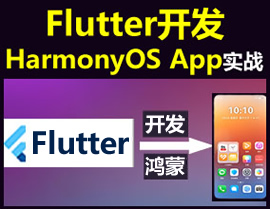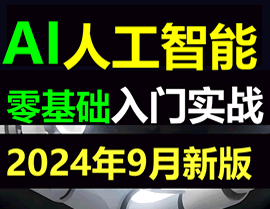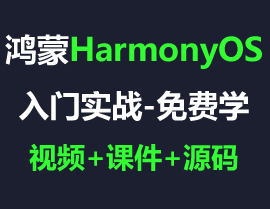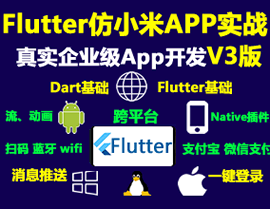Flutter状态管理插件flutter_reactive_state_machine的使用
Flutter状态管理插件flutter_reactive_state_machine的使用
本文将介绍如何在Flutter项目中使用flutter_reactive_state_machine插件。该插件扩展了reactive_state_machine包的功能,提供了ListenableStreamStateMachine和ListenableCommandStateMachine两种状态机实现。
插件功能简介
flutter_reactive_state_machine插件的主要功能是帮助开发者更方便地管理Flutter应用中的状态变化。通过使用状态机模式,可以更清晰地定义状态之间的转换逻辑,并且能够轻松地监听状态的变化。
ListenableStreamStateMachine
ListenableStreamStateMachine 是一个基于流的状态机,允许你在状态变化时自动更新UI。
ListenableCommandStateMachine
ListenableCommandStateMachine 提供了一种命令驱动的方式来管理状态变化,适合需要频繁执行操作的场景。
完整示例
以下是一个完整的示例,展示如何在Flutter项目中使用flutter_reactive_state_machine插件。
1. 添加依赖
首先,在pubspec.yaml文件中添加依赖:
dependencies:
flutter_reactive_state_machine: ^0.2.0然后运行 flutter pub get 来安装依赖。
2. 创建状态机
接下来,创建一个简单的状态机来管理用户的登录状态。
import 'package:flutter/material.dart';
import 'package:flutter_reactive_state_machine/flutter_reactive_state_machine.dart';
// 定义状态枚举
enum LoginState {
initial,
loading,
success,
failure,
}
// 创建状态机
final stateMachine = ListenableStreamStateMachine<LoginState>(
initialState: LoginState.initial,
transitions: {
LoginState.initial: {LoginState.loading},
LoginState.loading: {LoginState.success, LoginState.failure},
},
);3. 构建UI
构建一个简单的UI界面,包含按钮和文本显示当前状态。
class LoginScreen extends StatelessWidget {
[@override](/user/override)
Widget build(BuildContext context) {
return Scaffold(
appBar: AppBar(
title: Text('登录状态管理'),
),
body: Center(
child: StreamBuilder<LoginState>(
stream: stateMachine.stateStream,
initialData: LoginState.initial,
builder: (context, snapshot) {
final state = snapshot.data;
return Column(
mainAxisAlignment: MainAxisAlignment.center,
children: [
Text('当前状态: $state'),
SizedBox(height: 20),
ElevatedButton(
onPressed: () => stateMachine.sendEvent(LoginState.loading),
child: Text('开始加载'),
),
SizedBox(height: 10),
ElevatedButton(
onPressed: () => stateMachine.sendEvent(LoginState.success),
child: Text('登录成功'),
),
SizedBox(height: 10),
ElevatedButton(
onPressed: () => stateMachine.sendEvent(LoginState.failure),
child: Text('登录失败'),
),
],
);
},
),
),
);
}
}更多关于Flutter状态管理插件flutter_reactive_state_machine的使用的实战系列教程也可以访问 https://www.itying.com/category-92-b0.html
flutter_reactive_state_machine 是一个用于 Flutter 应用的状态管理插件,它基于状态机的概念来管理应用的状态。通过使用状态机,你可以更清晰地定义应用的状态转换逻辑,并且可以轻松地管理复杂的应用状态。
安装
首先,你需要在 pubspec.yaml 文件中添加 flutter_reactive_state_machine 依赖:
dependencies:
flutter:
sdk: flutter
flutter_reactive_state_machine: ^0.0.1然后运行 flutter pub get 来安装依赖。
基本使用
1. 定义状态和事件
首先,你需要定义应用的状态和可能的事件。状态和事件通常是通过枚举来定义的。
enum AppState {
idle,
loading,
loaded,
error,
}
enum AppEvent {
fetchData,
retry,
dataFetched,
errorOccurred,
}2. 创建状态机
接下来,你需要创建一个状态机,并定义状态转换逻辑。状态机是通过 ReactiveStateMachine 类来创建的。
import 'package:flutter_reactive_state_machine/flutter_reactive_state_machine.dart';
final stateMachine = ReactiveStateMachine<AppState, AppEvent>(
initialState: AppState.idle,
transitions: {
AppState.idle: {
AppEvent.fetchData: AppState.loading,
},
AppState.loading: {
AppEvent.dataFetched: AppState.loaded,
AppEvent.errorOccurred: AppState.error,
},
AppState.error: {
AppEvent.retry: AppState.loading,
},
},
);在这个例子中,我们定义了状态机的初始状态为 AppState.idle,并且定义了不同状态之间的事件触发转换。
3. 监听状态变化
你可以通过 stateMachine.stateStream 来监听状态的变化。
stateMachine.stateStream.listen((state) {
print('Current state: $state');
});4. 触发事件
你可以通过 stateMachine.emitEvent 来触发事件,从而引起状态的转换。
stateMachine.emitEvent(AppEvent.fetchData);5. 在 Flutter Widget 中使用
你可以将状态机与 Flutter Widget 结合起来使用。例如,你可以使用 StreamBuilder 来根据当前状态更新 UI。
import 'package:flutter/material.dart';
class MyApp extends StatelessWidget {
[@override](/user/override)
Widget build(BuildContext context) {
return MaterialApp(
home: Scaffold(
appBar: AppBar(title: Text('Reactive State Machine Example')),
body: StreamBuilder<AppState>(
stream: stateMachine.stateStream,
builder: (context, snapshot) {
if (!snapshot.hasData) {
return Center(child: CircularProgressIndicator());
}
final state = snapshot.data!;
switch (state) {
case AppState.idle:
return Center(child: Text('Idle'));
case AppState.loading:
return Center(child: CircularProgressIndicator());
case AppState.loaded:
return Center(child: Text('Data Loaded'));
case AppState.error:
return Center(child: Text('Error Occurred'));
}
},
),
floatingActionButton: FloatingActionButton(
onPressed: () {
stateMachine.emitEvent(AppEvent.fetchData);
},
child: Icon(Icons.refresh),
),
),
);
}
}






